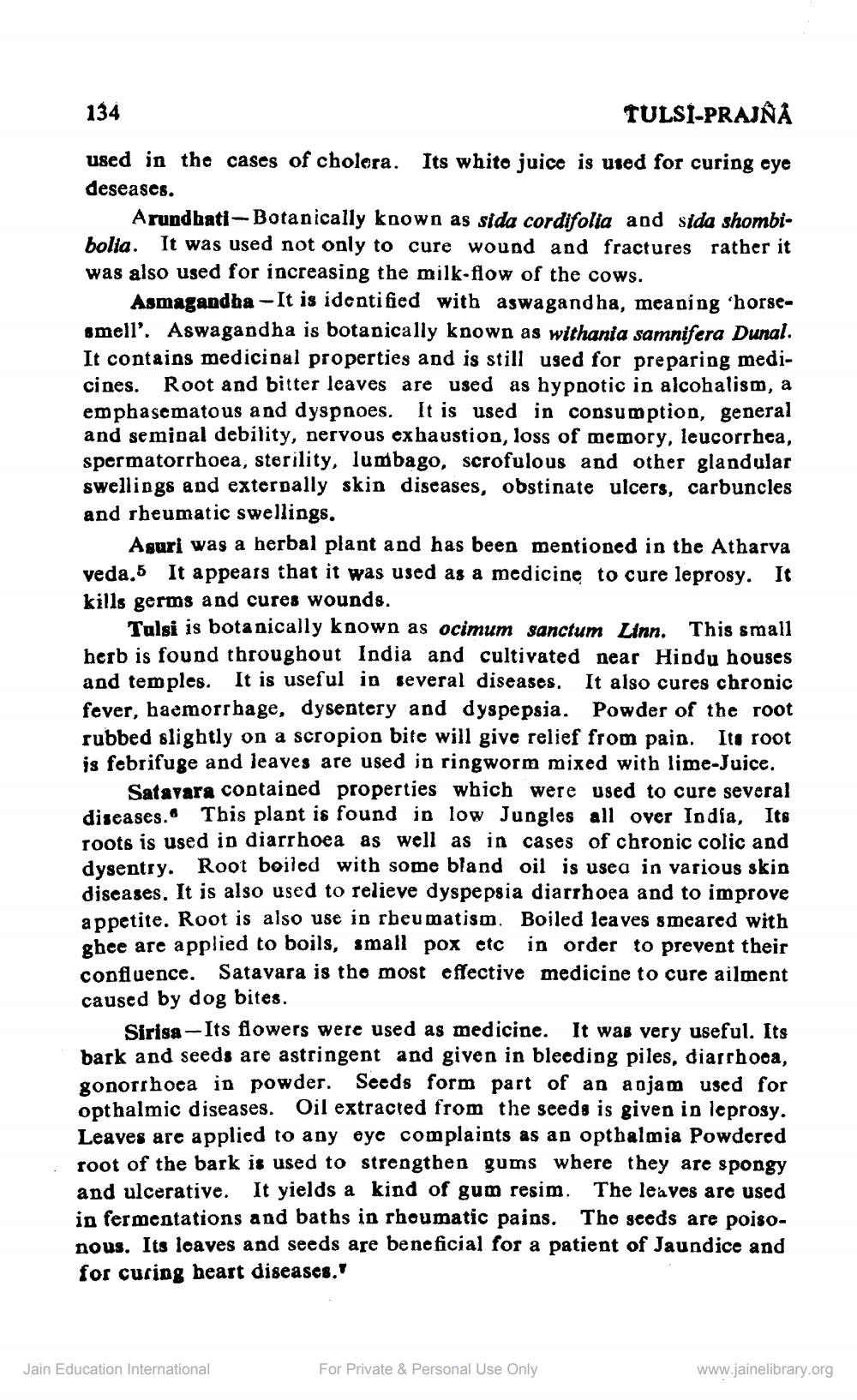________________
134
TULSI-PRAJÑA
used in the cases of cholera. Its white juice is used for curing eye deseases.
Arundhati-Botanically known as sida cordifolia and sida shombibolia. It was used not only to cure wound and fractures rather it was also used for increasing the milk-flow of the cows.
Asmagandha - It is identified with aswagandha, meaning 'horsesmell'. Aswagandha is botanically known as withania samnifera Dunal. It contains medicinal properties and is still used for preparing medicines. Root and bitter leaves are used as hypnotic in alcohalism, a emphasematous and dyspnoes. It is used in consumption, general and seminal debility, nervous exhaustion, loss of memory, leucorrhea, spermatorrhoea, sterility, lumbago, scrofulous and other glandular swellings and externally skin diseases, obstinate ulcers, carbuncles and rheumatic swellings.
Asuri was a herbal plant and has been mentioned in the Atharva veda.5 It appears that it was used as a medicine to cure leprosy. It kills germs and cures wounds.
Tulsi is botanically known as ocimum sanctum Linn. This small herb is found throughout India and cultivated near Hindu houses and temples. It is useful in several diseases. It also cures chronic fever, haemorrhage, dysentery and dyspepsia. Powder of the root rubbed slightly on a scropion bite will give relief from pain. Its root is febrifuge and leaves are used in ringworm mixed with lime-Juice.
Satavara contained properties which were used to cure several diseases. This plant is found in low Jungles all over India, Its roots is used in diarrhoea as well as in cases of chronic colic and dysentry. Root boiled with some bland oil is used in various skin diseases. It is also used to relieve dyspepsia diarrhoea and to improve appetite. Root is also use in rheumatism. Boiled leaves smeared with ghee are applied to boils, small pox etc in order to prevent their confluence. Satavara is the most effective medicine to cure ailment caused by dog bites.
Sirisa-Its flowers were used as medicine. It was very useful. Its bark and seeds are astringent and given in bleeding piles, diarrhoea, gonorrhoea in powder. Seeds form part of an anjam used for opthalmic diseases. Oil extracted from the seeds is given in leprosy. Leaves are applied to any eye complaints as an opthalmia Powdered root of the bark is used to strengthen gums where they are spongy and ulcerative. It yields a kind of gum resim. The leaves are used in fermentations and baths in rheumatic pains. The seeds are poisonous. Its leaves and seeds are beneficial for a patient of Jaundice and for curing heart diseases."
Jain Education International
For Private & Personal Use Only
www.jainelibrary.org




